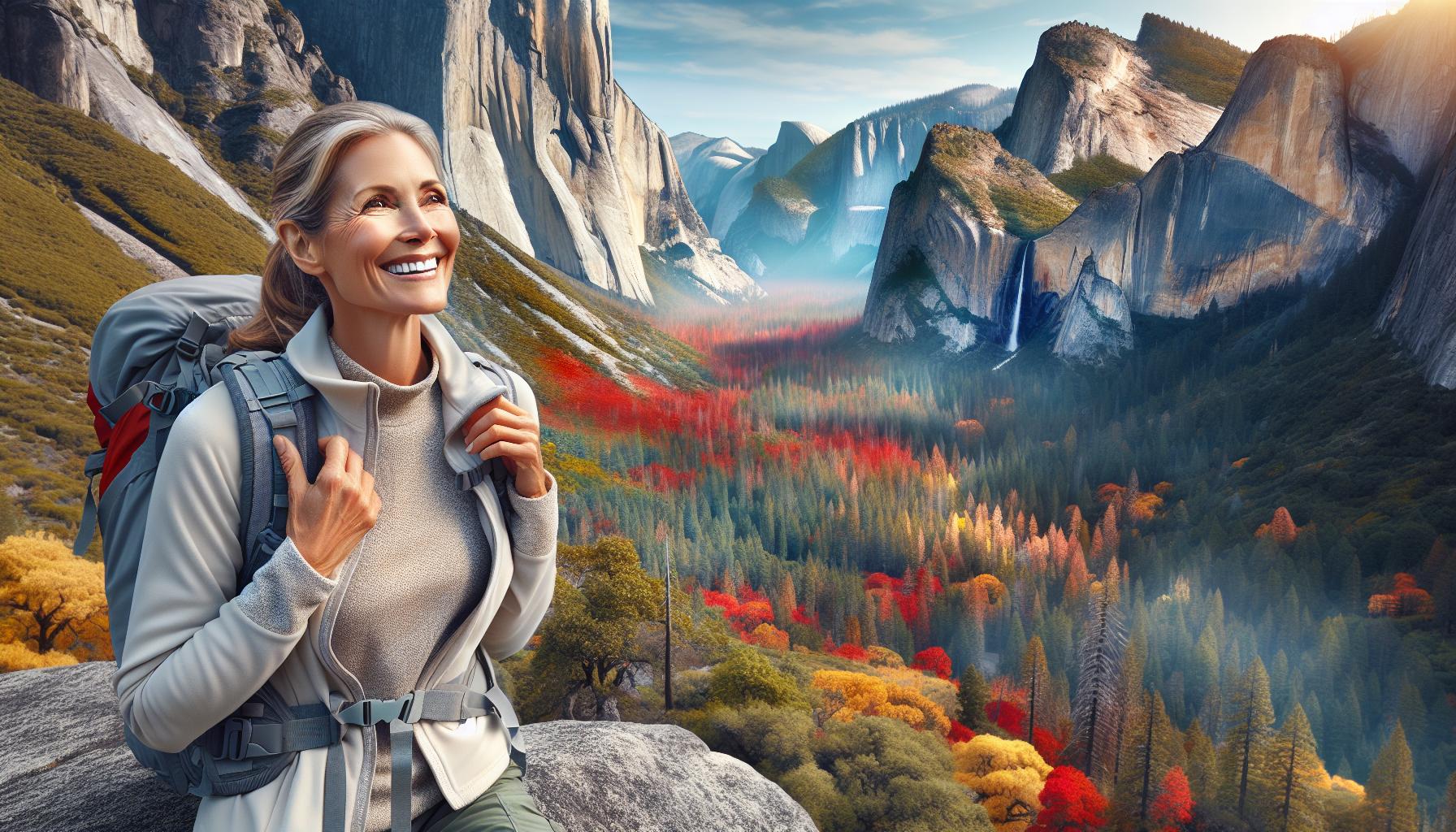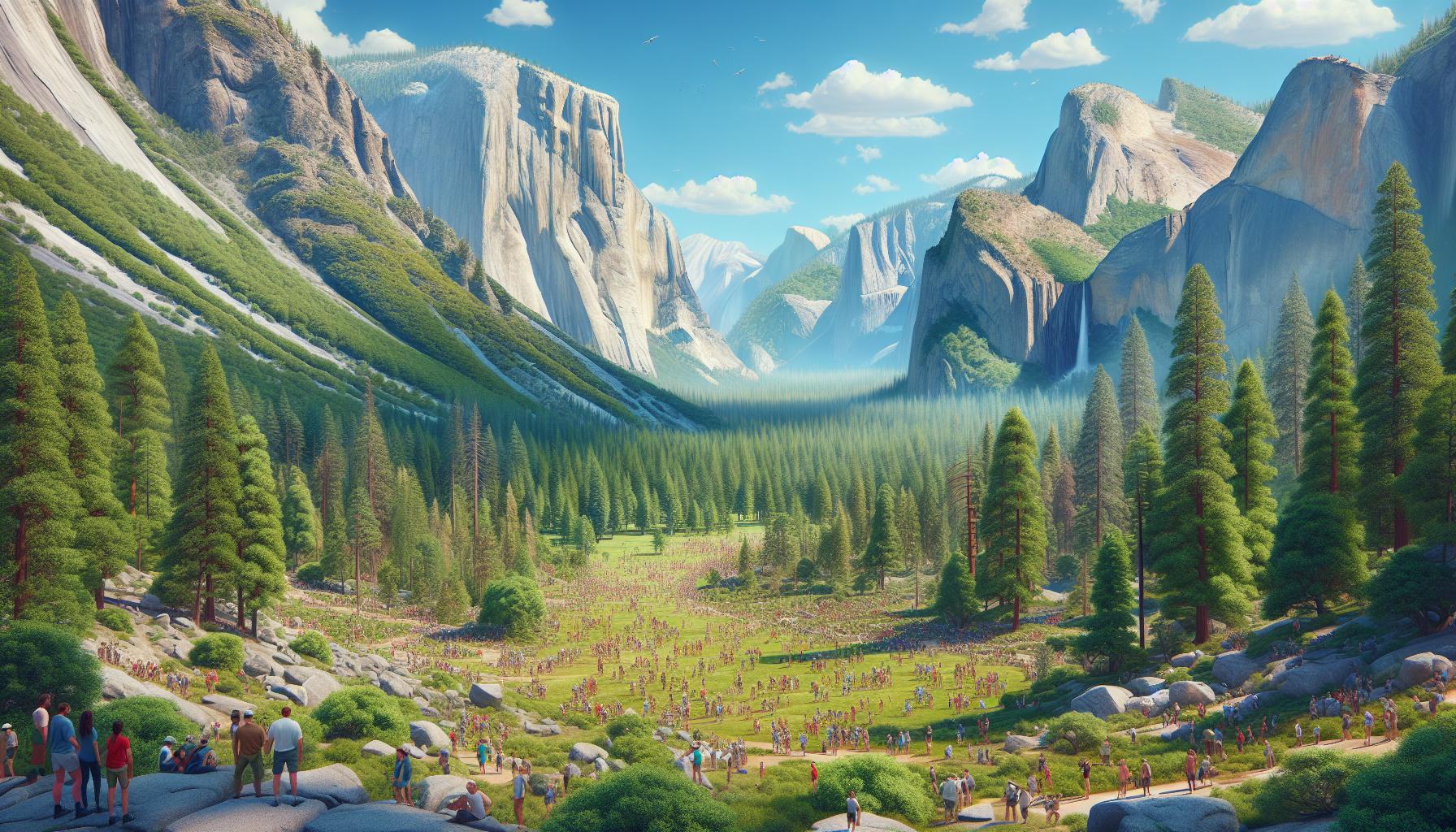Physical Address
304 North Cardinal St.
Dorchester Center, MA 02124
Physical Address
304 North Cardinal St.
Dorchester Center, MA 02124

Planning a trip to Yosemite National Park can feel like solving a puzzle with moving pieces. Between the seasonal crowds, weather changes and trail conditions there’s a lot to consider when choosing the perfect time to visit this natural wonder.
Mother Nature puts on quite a show in Yosemite throughout the year. From spring’s rushing waterfalls to winter’s pristine snowscapes each season offers its own magical experience. But timing is everything when it comes to making the most of your Yosemite adventure. The best month to visit depends on what you’re looking to experience – whether it’s hiking through wildflower meadows catching the golden light on Half Dome or avoiding the peak season crowds.
Selecting the optimal time to visit Yosemite directly impacts the quality of park experiences. Weather conditions affect trail accessibility, with 50% of park roads closing during winter months. Temperature variations range from 90°F in summer to below freezing in winter, influencing outdoor activities.
Crowd levels fluctuate dramatically throughout the year:
Natural phenomena align with specific timeframes:
| Season | Key Attractions | Accessibility |
|---|---|---|
| Spring | Waterfalls at peak flow | 80% of trails open |
| Summer | All attractions accessible | 100% of trails open |
| Fall | Fall colors in valleys | 90% of trails open |
| Winter | Snow-capped peaks | 40% of trails open |
Accommodation availability varies by season:
Park activity schedules change seasonally, affecting ranger programs, shuttle services, and facility operations. Popular attractions like Glacier Point Road operate on seasonal schedules, with full access limited to summer months.

Yosemite’s peak season transforms the park into a vibrant hub of outdoor activities with extended daylight hours from sunrise to sunset. The park reaches maximum visitor capacity during these months, recording over 750,000 monthly visitors.
Peak season attracts the largest crowds to Yosemite’s most popular attractions. Visitor centers open at 9 AM with lines forming 30 minutes before opening. Parking lots fill by 10 AM at major sites like Yosemite Valley, Glacier Point and Tuolumne Meadows. Popular trails such as Mist Trail and Yosemite Falls see continuous foot traffic from 8 AM to 6 PM. Shuttle wait times extend to 20-30 minutes during midday hours. Camping and lodging reservations reach full capacity 6 months in advance for peak season dates.
Summer temperatures range from 71°F to 90°F at valley elevation, dropping 5°F for every 1,000 feet gain in altitude. Morning temperatures average 50°F, creating ideal hiking conditions before the afternoon heat. All park roads remain open, providing access to 100% of hiking trails and attractions. Trail conditions stay dry with minimal hazards, though afternoon thunderstorms occur 2-3 times per month. High-elevation trails above 8,000 feet experience 40% less humidity than valley trails. Popular swimming areas like Mirror Lake maintain refreshing 65°F water temperatures throughout summer months.
Spring transforms Yosemite into a spectacular display of natural power as winter snow melts into rushing waterfalls. This season marks the park’s reawakening with blooming wildflowers and increasing accessibility to trails.
Yosemite’s waterfalls reach peak flow from March to May, with Yosemite Falls thundering at 2,425 feet. Bridalveil Fall surges to six times its autumn volume, creating massive water sprays visible from Tunnel View. Cascade Creek feeds into multiple seasonal falls, including Sentinel Falls and Ribbon Falls, which only flow during spring months. March brings the initial snowmelt, while May delivers the most dramatic water displays when temperatures rise consistently above 60°F.
Spring temperatures fluctuate between 35°F to 65°F, with March averaging 45°F and May reaching daily highs of 70°F. Morning frost occurs through April, especially at elevations above 4,000 feet. Precipitation varies from 3.5 inches in March to 1.5 inches in May. Snow remains possible at higher elevations, particularly on Tioga Road and Glacier Point. Clear days alternate with rain showers, creating optimal conditions for photography with dramatic cloud formations and rainbow appearances near waterfalls.
| Month | Average Temperature (°F) | Precipitation (inches) |
|---|---|---|
| March | 45 | 3.5 |
| April | 55 | 2.5 |
| May | 65 | 1.5 |
Fall brings tranquility to Yosemite National Park as summer crowds disperse, creating intimate experiences with nature. The park transforms into a canvas of autumn colors while maintaining comfortable temperatures for outdoor activities.
Yosemite Valley’s black oaks, dogwoods, maples burst into vibrant yellows, oranges, reds during October. Peak fall foliage appears in lower elevations from mid-October through November, with colors intensifying near Cook’s Meadow, Valley View, El Portal Road. Rock climbing conditions reach their prime in autumn, attracting enthusiasts to world-famous routes like El Capitan. Hiking trails remain 90% accessible, offering crowd-free experiences on popular paths including Mirror Lake Loop Trail, Lower Yosemite Falls Trail, Sentinel Dome Trail.
Daytime temperatures average 50°F to 70°F, creating ideal conditions for extended outdoor activities. Morning frost occurs occasionally, particularly at higher elevations above 8,000 feet. Clear skies dominate fall months, with precipitation averaging only 1.5 inches in September, 2.1 inches in October. Visibility improves dramatically as summer haze dissipates, enhancing photography opportunities of Half Dome, El Capitan, Valley View. Park facilities operate on reduced hours but remain fully functional, with visitor centers open 9 AM to 5 PM daily.
| Fall Weather Data | September | October |
|---|---|---|
| Average High (°F) | 70 | 63 |
| Average Low (°F) | 50 | 45 |
| Precipitation (inches) | 1.5 | 2.1 |
| Trail Accessibility | 90% | 85% |
Yosemite transforms into a pristine winter paradise from November through February, with snowfall averaging 12 inches in Yosemite Valley and 48 inches at higher elevations. The park’s dramatic cliffs draped in snow create stunning photography opportunities with fewer visitors.
Winter sports enthusiasts flock to Badger Pass Ski Area, California’s oldest ski resort, offering 10 runs across 90 acres of terrain. Cross-country skiing spans 25 miles of marked trails through Glacier Point Road area. Visitors access ice skating at Half Dome Village’s outdoor rink from mid-November through March. Snowshoeing tours depart daily from the Badger Pass Lodge, covering 3.5 miles of scenic terrain. Photography opportunities peak during winter mornings, when frost crystals coat the valley floor and mist rises from the Merced River.
Temperatures fluctuate between 25°F to 45°F in Yosemite Valley, dropping below 20°F at higher elevations. Tire chains become mandatory on park roads when snow accumulates, affecting access to 60% of park areas. Lodging options concentrate in Yosemite Valley, with Curry Village’s heated tent cabins operating at 50% capacity. Visitors pack specialized winter gear including waterproof boots, insulated layers and emergency supplies for backcountry excursions. The Yosemite Valley Visitor Center operates from 9 AM to 5 PM, providing current weather conditions and trail accessibility updates.
Each activity in Yosemite has optimal months for peak experiences based on weather conditions trail accessibility. The park offers distinct advantages for specific activities throughout the year.
May through September provides optimal hiking conditions with 100% trail accessibility. Hiking trails remain snow-free during these months with temperatures ranging between 70°F to 85°F. Rock climbing peaks in September through October when temperatures cool to 65°F to 75°F creating perfect friction on El Capitan Half Dome. Spring hiking offers spectacular waterfall views along the Mist Trail with moderate temperatures of 55°F to 65°F. Summer mornings deliver prime hiking conditions before temperatures rise requiring early starts at 6 AM to avoid afternoon thunderstorms heat exhaustion.
Spring delivers dramatic waterfall photography opportunities from March through May as snowmelt creates peak flows. October presents vibrant fall colors at Valley View Cook’s Meadow Mirror Lake. Winter transforms Tunnel View into a snow-covered panorama from December through February with clear crisp air enhancing visibility. Morning fog in autumn creates ethereal conditions for landscape photography particularly at Glacier Point Taft Point. Sunset photography excels in summer from June through August when extended daylight allows shooting until 8:30 PM. Spring wildflower displays peak in April creating stunning macro photography opportunities throughout Tuolumne Meadows.
Choosing the best month to visit Yosemite depends entirely on what visitors want to experience. Each season transforms the park into a distinct natural wonderland with its own unique charm and activities.
For those seeking the fullest access to trails and amenities summer is ideal despite the crowds. Nature photographers might prefer spring’s thundering waterfalls or fall’s vibrant colors. Winter delivers a serene snowy paradise perfect for those who don’t mind limited access and colder temperatures.
The key is to align travel dates with personal priorities whether that’s optimal weather specific activities or fewer crowds. With proper planning any month can offer an unforgettable Yosemite experience.